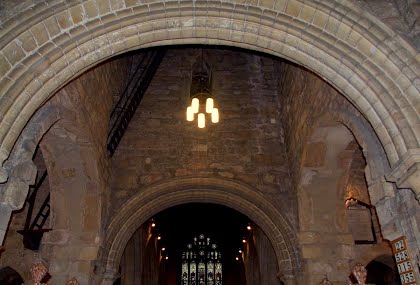Our History and Building
The history of Norton Church began about the year 1000, with the benefaction of the village and its people to St. Cuthbert at Durham. The "Liber Vitae" Records:
"7 ic Ulfcytel Osulfes sunu sylle Norðtun mið mete & mið mannan into S’ce Cuðberhte 7 all ðer into hyreð mið sace 7 mið socne 7 se ðe þis aþende sy he ascyred from Godes dæde 7 from eallum haligdome."
Thus, the church was built as a place of worship and as a protection, in about 1020AD.
In 1083, by Papal rescript, Norton was made a collegiate church by Bishop Carileph, for the maintenance of secular canons, whom he had removed from Durham. A vicar and eight canons were allocated here. Norton became a small monastery, known as: THE COLLEGIATE AND PARISH CHURCH OF ST. MARY THE VIRGIN, OUR LADY OF THE ASSUMPTION. The symbol of the Assumption, a sword transfixing a heart, enfolded by two gold wings, is still the emblem of the church today.
From 1083, until the Reformation, the college maintained the daily round of masses and offices, which made up the worship of the church.
Norton was the Mother Church of a parish extending over Stockton, Preston and Hartburn. All the parishioners paid their dues on August 15th: the Feast of the Assumption. A chapel was built at Stockton in 1236, but Stockton did not become a separate parish until 1713.
The small Saxon church was built in stone, in the shape of a cross. At first, the nave would have been little bigger than the chancel or the transepts, as the people of the village stood to hear the Latin mass, or part of it, and had no need of seating. The floor would have been covered in straw. The transepts were used as chapels, each containing an altar. The building has grown as the population increased.
Below are more details about the building itself
The Crossing
The Chancel
The Nave







